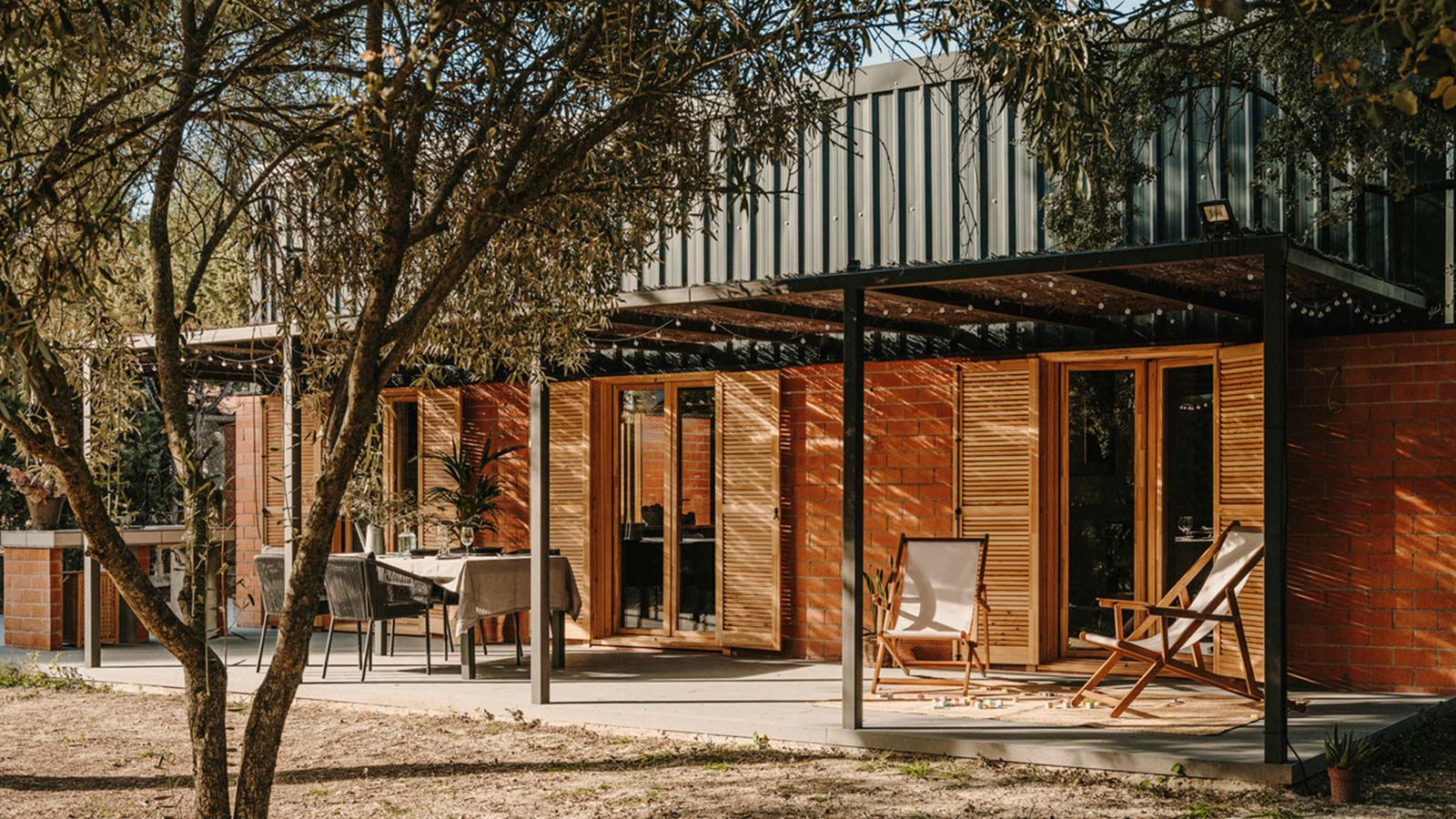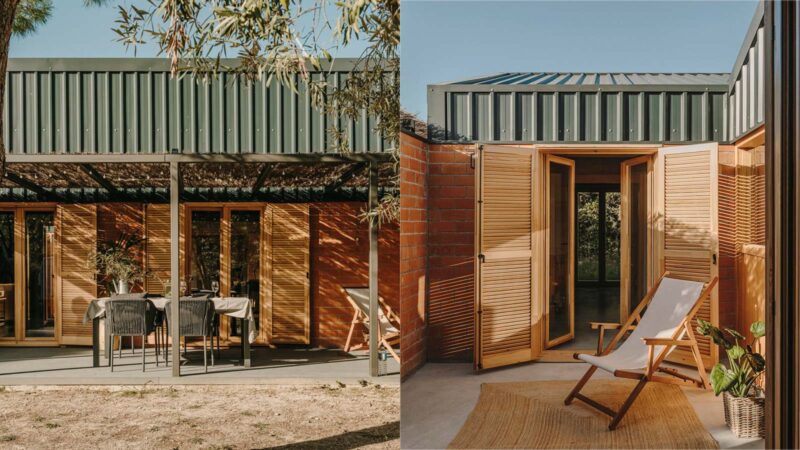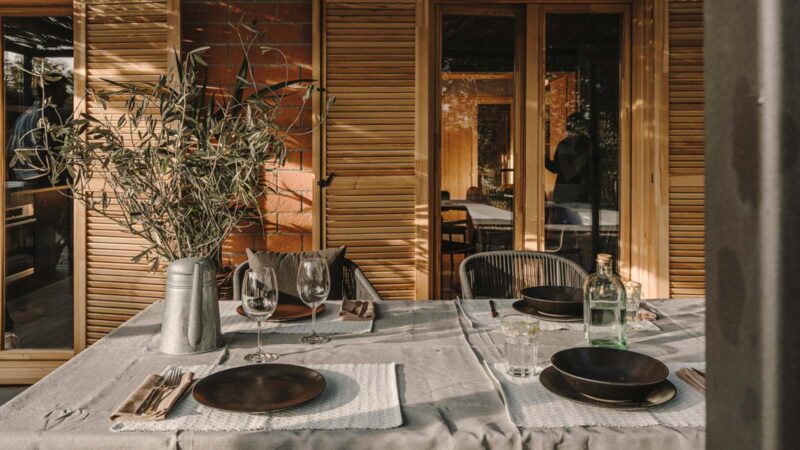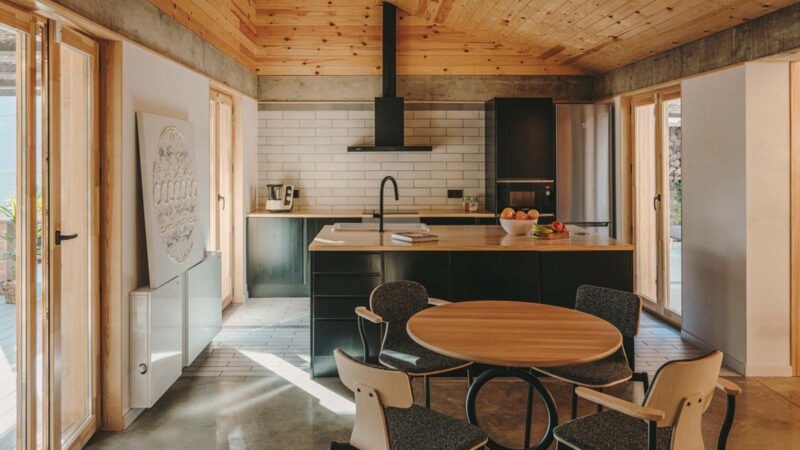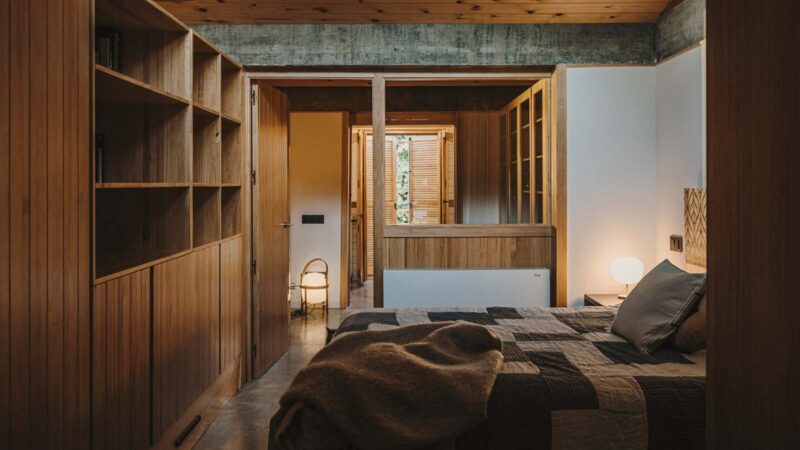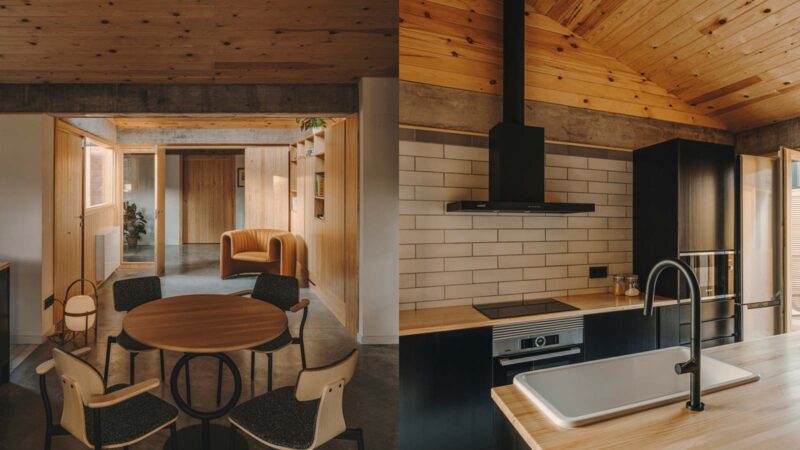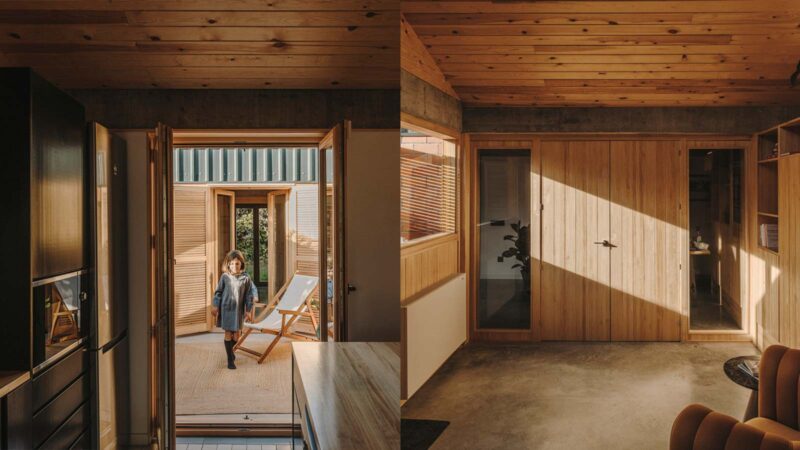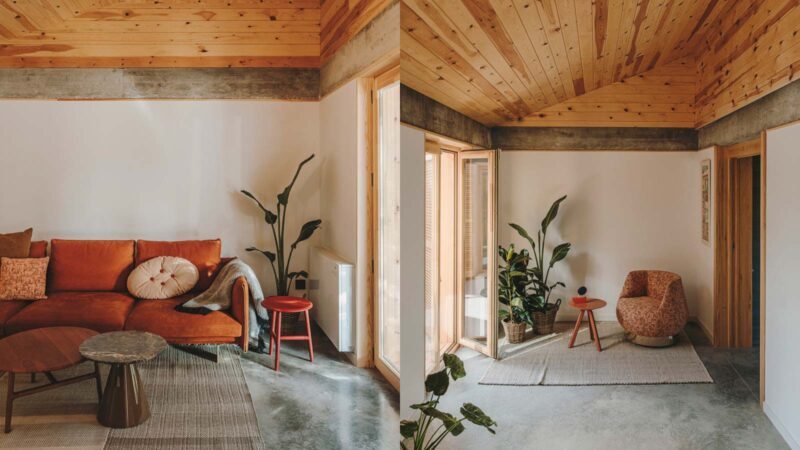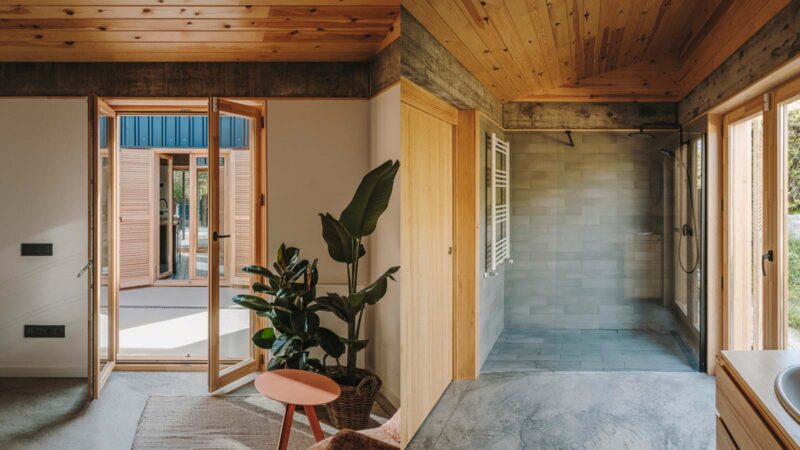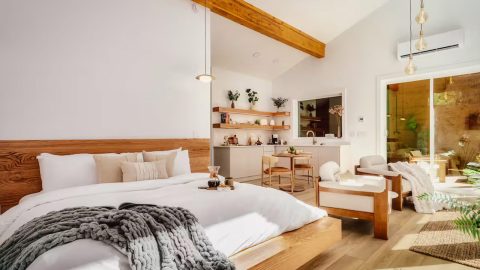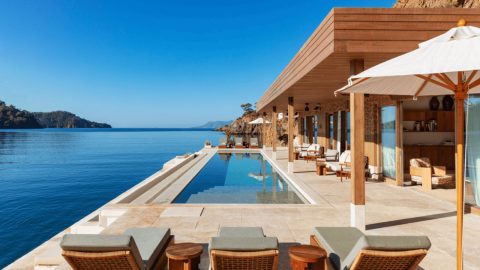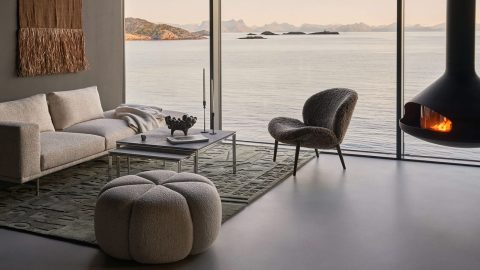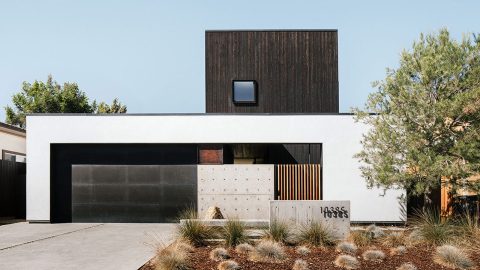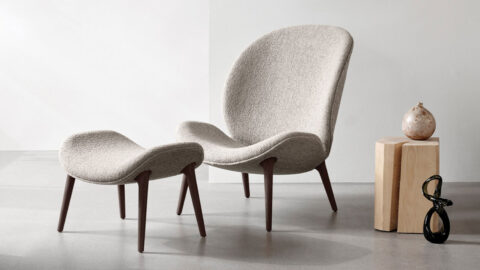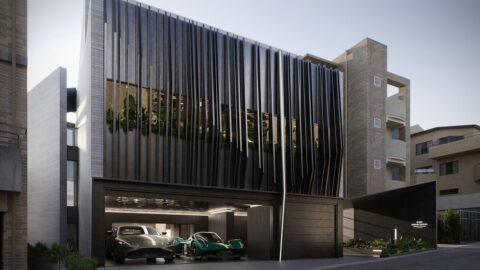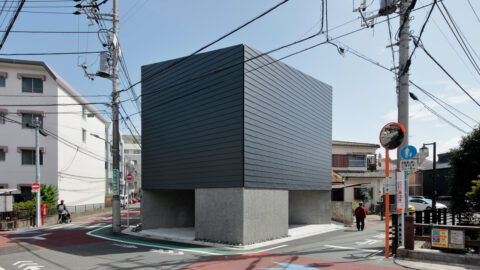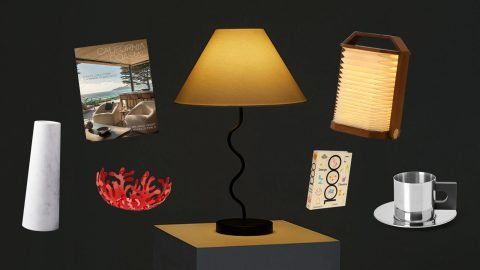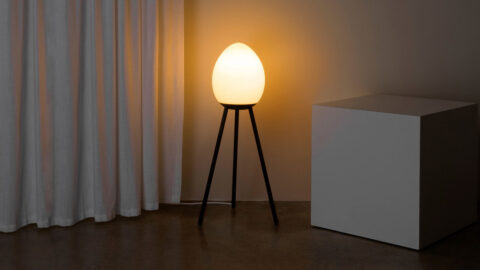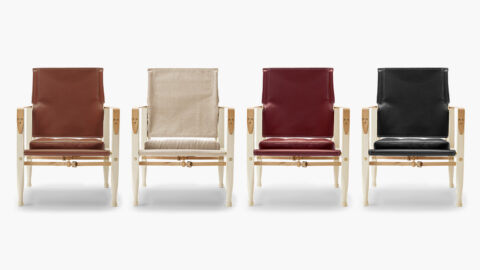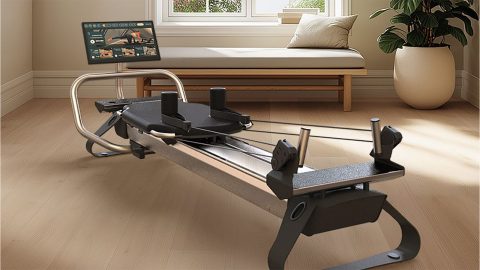Casa en Cerros de Madrid is a 2,583 ft² compact, passive residence in Villalbilla, Spain for a family of four designed and constructed by Slow Studio. Built with the goal of reducing heating and cooling requirements throughout the home, Casa en Cerros de Madrid achieves the standards for a passive house. The structure is made of double-brick walls with insulation between each layer, which regulates indoor temperatures while still providing strong protection from the elements. A sloped roof encased in metal provides visual interest while strategically placed skylights bring sunlight into the heart of the home. With an abundance of doors and windows, the home can be passively cooled. According to Slow Studio, “Having a very compact floor plan is in itself a key strategy to reduce energy losses through the facade. That compactness is only interrupted by the courtyard bringing sunlight to the northern rooms. Additionally, raising the roof introduces light and heat to the south. In summer, the owners can open up the southern and northern facades, generating proper cross ventilation.”
Sancal, a Spanish interior design firm, developed a natural palette to match the home’s ethos. The palette consists largely of concrete and wood used throughout the residence. Exposed wood permeates the home’s interior and the ceilings are paneled with natural pine planks that were sourced from a local supplier. Casa en Cerros de Madrid features an open living area, a large modern kitchen with an adjoining dining area, two large bedrooms, two bathrooms, a dressing room, and a home office.
A second lounge area with an open wood fireplace is cleverly interconnected with the master bedroom. Separated by floor-to-ceiling timber slats, the master bedroom can open up to the lounge area or be closed off for privacy. This clever design allows the sunlight from the bedroom to enter the lounge area, and the heat from the wood fire to warm the adjacent bedroom. The fireplace is also connected to a thermal stove that when in use heats water for the bathrooms and interior heating. Furthermore, the home features a central interior courtyard that acts as a magnet for natural light, while also doubling as a sitting room.
For more interesting architecture, check out Casa Las Olas in the Dominican Republic.

